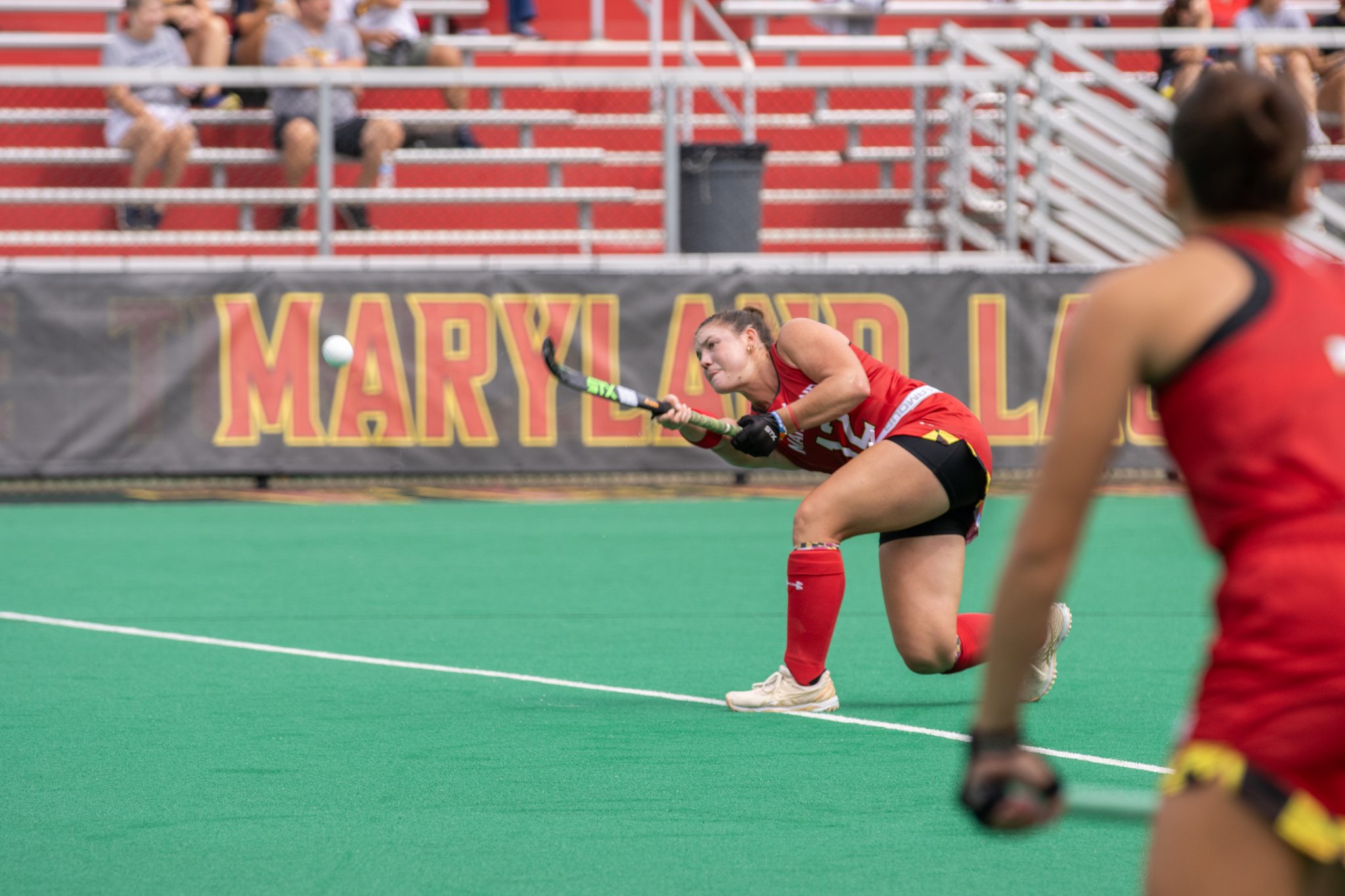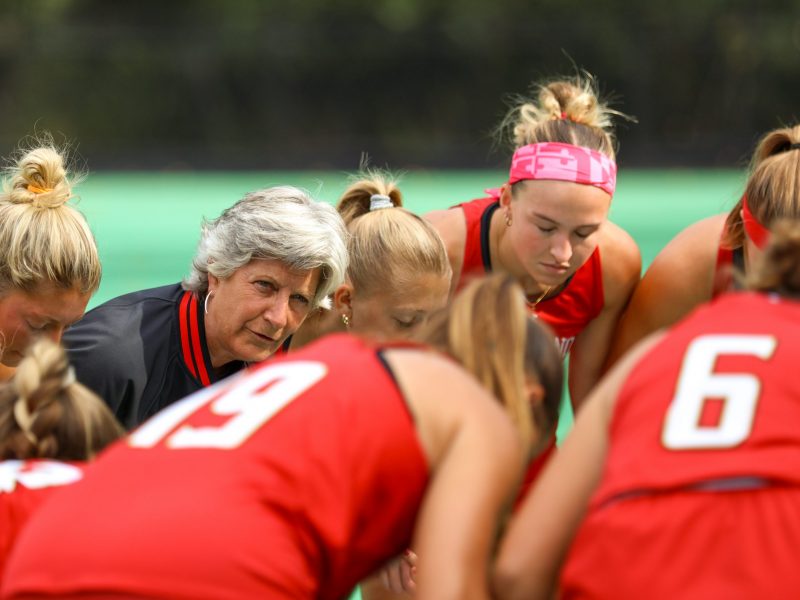Maryland field hockey’s Maya Everett sprinted toward the cage from the midfield after stealing a wayward Boston College pass in the third quarter Friday. The sophomore evaded stick tackles from Eagles defenders before she flicked a shot into the cage for Maryland’s second goal of the game and sixth of the season.
Everett, a midfielder, became the Terps’ sixth goal scorer on the year. While No. 5 Maryland’s offense has showcased strong depth early this season, it’s also shown there’s no go-to scorer.
The Terps were expected to face offensive adversity this season after losing prolific attackers Sammy Popper, Margot Lawn and Hannah Boss. The trio combined to net more than 42 percent of last season’s goal output.
Hope Rose’s position change from forward to midfield added another moving piece to the attack. The senior led the Terps with 13 goals from the forward line last year.
“She was a predominant goal scorer for us, and really took that role on as being the finisher,” coach Missy Meharg said.
While the Terps handled their difficult early season schedule well, claiming two ranked wins, their lack of a dominant offensive threat hindered their performance against No. 4 Duke.
[No. 4 Maryland field hockey falls to No. 5 Duke, 1-0, for first loss of the season]
Despite dominating possession and out-playing Duke for the majority of the match, Maryland squandered numerous scoring opportunities in its 1-0 shutout to the Blue Devils on Sunday.
“When we did have opportunities we were a little bit desperate,” Meharg said. “We didn’t take our time with the shots that we did have.”
The Terps put four of their 10 shots on target, heavily out-shooting the Blue Devils in overall attempts, but struggled to make chances in a packed shooting circle. The shot advantage didn’t matter — Duke scored on its only shot-on-goal of the game as it showed forward Alaina McVeigh’s skill in drawing a defense’s attention to free space for the rest of the offense.
The 2023 first team All-American registered just one shot on Sunday. McVeigh, a junior, had few opportunities in the shooting circle and lost several one-on-ones against fifth-year defender Rayne Wright.
But while McVeigh didn’t score, her ability to occupy the attention of Maryland’s most polished defender created attacking space for Duke’s midfielders. The Blue Devils’ breakthrough came just after six minutes into the third quarter when senior midfielder Josephine Palde scored the lone goal.
A lack of precision wasn’t limited to the Duke loss. Maryland’s offense has struggled with it even in its wins.
[No. 4 Maryland Field Hockey cruises past No. 17 Boston College, 2-0, in Big Ten, ACC cup]
While the Terps’ attacking unit has been consistently cohesive, many of its attacks stall once in the shooting circle. Each of the four stout defenses Maryland faced have made successful efforts to crowd the circle and reduce shooting space for the Terps’ forwards.
Maryland has scored the second-fewest goals this season among Big Ten teams. Its shot percentage and shot-on-goal percentage are third-worst in the conference.
A definitive goal-scorer could’ve avoided double-overtime against Louisville and forced extra time against Duke. But the loss to the Blue Devils isn’t going to drastically change Maryland’s attack for the rest of the season — Meharg said the Terps’ ideal offense stems from midfield speed. She wants her entire offense in position to score.
But according to graduate student midfielder Emma DeBerdine, the offensive versatility boosts Maryland’s scoring ability.
“We have a lot of talented goal scorers and we move the ball around and pass the ball a lot,” DeBerdine said. “It gets a lot of people in goal-scoring opportunities.”



